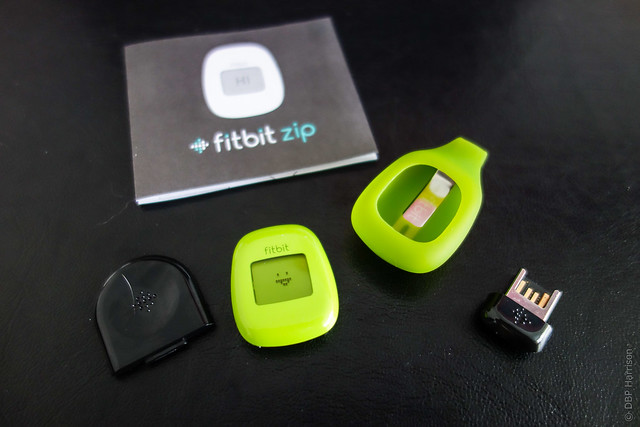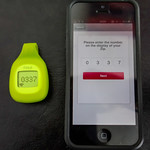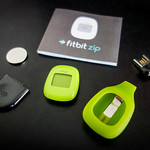I ordered a FitBit Zip from Amazon a few days ago, to have a look at the hardware, and investigate usage of the FitBit API for tracking physical activity for my PhD. As there aren’t so many real-world photographs online yet I thought I’d post some.
The FitBit Zip is a small pedometer-like device, comprised of an advanced 3-axis pedometer, a small screen and a Bluetooth 4 conenction. This allows it to be connected to either Bluetooth 4 iOS devices (iPhone 4s, 5, iPad 3, 4 and mini), or to computers using the supplied USB dongle. The device itself has a small LCD screen, where users can view the number of steps they’ve taken that day, along with an estimation of the distance travelled and the number of calories they have burned. There is also a smilie, giving a more abstract display of the users progress towards their daily goal- showing a sad or happy face depending on the number of steps the user has made.
The device itself is only part of the solution, the FitBit iOS application and website offer tracking and recording of additional items- other forms of exercise not recorded by the FitBit (cycling, for example) weight, diet and the amount of water drank- offering users a more complete solution than recording steps alone. Users are able to set-goals and monitor their progress over time using these applications, and others provided by third-parties.
This is done through an API which allows third party developers to access the data uploaded to the FitBit website. It was this that first attracted me to the platform, as it would allow me to abstract the data recorded and use it for my own visualisations and purposes during my projects.
The focus of my PhD is encouraging walking and cycling in London, fitness products are very popular at the moment- it seems that more new products are announced each day. Many offer a very similar approach- pedometers allowing goal-setting and tracking, with a limited amount of community sharing and competition. There are a few devices which take a different approach- blending gamification and badges too.
They come in many different form factors, the FitBit Zip is quite a small and subtle device, which can be hidden about the body if chosen, activity can be monitored with the iOS app and the FitBit website. Others, such as the Nike+ FuelBand are attached to the wrist and pernamently visible- encouraging regular checking of activity throughout the day, and offer an abstract display of activity- turning it into “Nike Fuel”.
I’ll keep this blog updated with my progress with the FitBit, and where we decide to go from here (I think I’m interested in evaluating the successfulness of the different approaches these devices take on increasing physical activity).




I did use the fitbit zip while i was traveling south, it really came handy and due to its small size one can keep it in a pocket. Overall its a nice pedometer. Thanks for sharing.